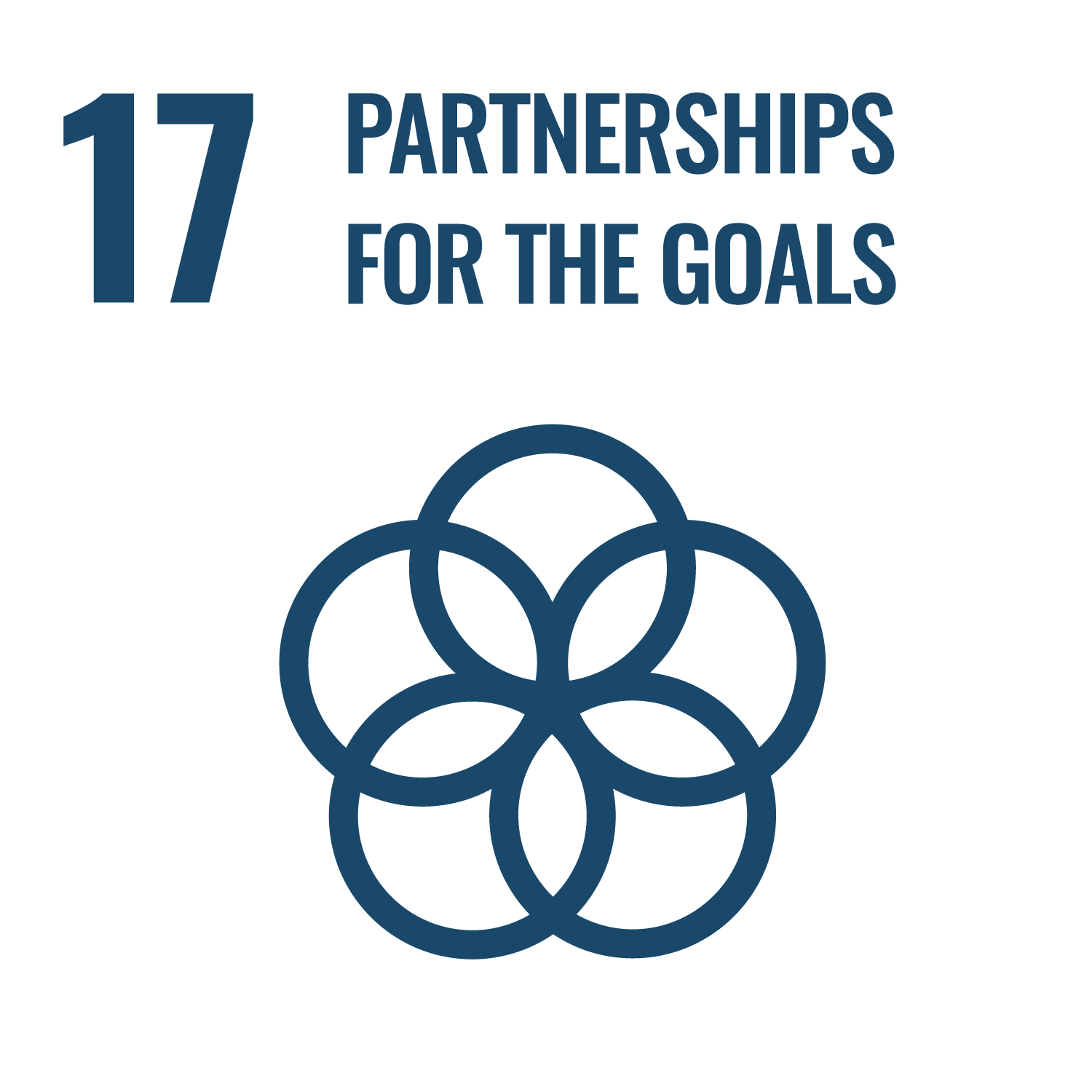 Goal 17. Partnerships to achieve the Goal
Goal 17. Partnerships to achieve the Goal
17.4.4 AASTMT's Role in Promoting Sustainable Literacy
2023-2024
AASTMT continued strengthening sustainability literacy during the 2023–2024 academic cycle, expanding assessment practices across programs and embedding SDG-related evaluation into coursework and institutional initiatives. The evidence below demonstrates how student understanding of sustainability is measured in a structured and verifiable manner.
Sustainability Literacy and Knowledge Assessment Framework (SLAF)
Building on earlier initiatives, AASTMT strengthened its evaluation processes in 2023–2024 through the expanded implementation of the Sustainability Literacy and Knowledge Assessment Framework (SLAF). This framework applies rubric-based evaluations, SDG-linked project assessments, and outcome-driven criteria to measure how effectively students understand and retain sustainability concepts within their academic disciplines. Beginning in September 2023, SLAF was formally integrated across most academic programs, ensuring that all students complete at least one sustainability-focused assessment prior to graduation. Through these embedded evaluation tools, AASTMT has established a consistent, university-wide mechanism for assessing sustainability literacy and monitoring student learning outcomes.
Example: Sustainability Literacy Assessment Using an SDG-Linked Rubric (ELES214 – Logistics & Supply Chain Management)
The application of SLAF can be seen clearly in the evaluation rubric used within the Logistics and Supply Chain Management program for Course Code ELES214. In this project, students were assessed on a set of learning outcomes directly linked to SDG 7 (Affordable and Clean Energy) and SDG 12 (Responsible Consumption and Production). The rubric evaluates competencies such as understanding energy-policy impacts, communicating the need for energy efficiency, applying renewable-energy strategies, recognizing global clean-energy challenges, and demonstrating knowledge of sustainable production and consumption practices.
Each criterion is scored on a scale from 1 (Insufficient) to 5 (Excellent), providing a measurable indicator of the student’s sustainability literacy. In the example shown, the student achieved high scores across most sustainability-related indicators—particularly in renewable-energy application and sustainable production strategies—resulting in an overall score of 4.5/5. This outcome illustrates the student’s strong ability to analyze sustainability issues, communicate their importance, and apply SDG-related concepts within a discipline-specific context.
College of International Transport and Logistics
Evaluation Rubric
Semester: Fall 2022-2023 Department: Logistics and Supply Chain Management
Course Code: ELES214
Total Score: 4.5/5
Category | Insufficient (1) | Fair (2) | Good (3) | Very good (4) | Excellent (5) | Score | Total |
SDG7 by the end of this project the student will be able to | |||||||
Understands how policies can influence the development of energy production, supply, demand and usage. | ✔ | 3 | 4.2 | ||||
Able to communicate the need for energy efficiency and sufficiency. | ✔ | 4 | |||||
Apply basic principles to determine the most appropriate renewable energy strategy in a given different sectors. | ✔ | 5 | |||||
Assess and understand the need for affordable, reliable, sustainable and clean energy of other people/other countries or regions. | ✔ | 4 | |||||
Apply basic principles to determine the most appropriate renewable energy strategy in a given situation. | ✔ | 5 | |||||
SDG 12 by the end of this project the student will be able to | |||||||
Know about strategies and practices of sustainable production and consumption. | ✔ | 5 | 4.8 | ||||
Communicate the need for sustainable practices in the industrial sector. | ✔ | 5 | |||||
Encourage others to engage in sustainable practices in industrial life. | ✔ | 4 | |||||
Plan, implement and evaluate consumption-related activities using existing sustainability criteria such as (Environmentally friendly material, E- vehicle,…….). | ✔ | 5 | |||||
Challenge cultural and social orientations in consumption and production. | ✔ | 5 | |||||
ESG - Environmental, Social and Governance
SDG-Integrated Academic Assessment Rubrics
AASTMT evaluates sustainability literacy through structured SDG-based rubrics embedded within academic coursework. These rubrics measure student competencies related to SDG themes such as affordable clean energy, sustainable production, climate action, and responsible consumption. Assessment criteria include students’ ability to apply sustainability strategies, analyze environmental impacts, and propose SDG-aligned solutions. By assigning measurable scores across performance levels, these rubrics provide direct evidence of how students learn, understand, and retain sustainability concepts in their field of study.
ABET–SDG Mapping of Learning Outcomes
AASTMT institutionalizes sustainability literacy by aligning ABET student learning outcomes with the UN Sustainable Development Goals. The ABET–SDG mapping table demonstrates how core competencies such as design, ethics, communication, teamwork, and lifelong learning are directly connected to SDGs including SDG 3, SDG 4, SDG 5, SDG 6, SDG 7, SDG 9, SDG 10, SDG 12, SDG 13, SDG 14, SDG 15, and SDG 17. This alignment ensures that sustainability is not only taught but formally assessed through program-level learning outcomes. As a result, all students enrolled in ABET-accredited programs receive sustainability-linked evaluation as part of their academic progression.
2022-2023
The Arab Academy for Science, Technology, and Maritime Transport (AASTMT) prioritizes advancing sustainability literacy by embedding sustainability principles across its curriculum and leveraging comprehensive assessment tools to evaluate students’ understanding and retention of key concepts. These efforts ensure that students are equipped to tackle contemporary sustainability challenges. Additionally, AASTMT engages students through practical, hands-on learning experiences and community-focused initiatives, cultivating a proactive mindset and empowering them to address global sustainability issues with innovative and impactful solutions.
Mapping the SDGs with Curriculum and Application of Sustainability Assessment Tool
Since 2021, the Arab Academy for Science and Technology (AASTMT) has made remarkable progress in embedding sustainability into its educational framework. By employing comprehensive mapping matrices, AASTMT aligns academic courses with specific Sustainable Development Goals (SDGs), effectively promoting awareness and encouraging active engagement among students, faculty, staff, and the broader community. These matrices provide a systematic approach to incorporating sustainability principles across disciplines, ensuring that courses partially or fully address relevant SDGs.
To complement this initiative, AASTMT implemented a robust sustainability assessment tool in 2022. This tool evaluates students' grasp and application of sustainability principles, emphasizing the translation of theoretical knowledge into practical solutions. The assessment fosters a deeper understanding of sustainability concepts while cultivating skills necessary for real-world problem-solving.
SDG assessment Integration (2022)
As part of its sustainability integration efforts, AASTMT launched a pilot project in 2022 to assess the effectiveness of SDG incorporation across the curricula of four colleges:
• College of Computing and Information Technology
• College of Engineering and Technology
• College of International Transport and Logistics
• College of Maritime Transport and Technology
The project aimed to measure students’ comprehension of sustainability concepts and their ability to apply these ideas within their discipline-specific coursework. Tailored evaluation criteria ensured alignment with the distinctive objectives of each program.
Example: Sustainability in Object-Oriented Programming
The pilot project highlighted how technical courses can integrate sustainability. For instance, in the Object-Oriented Programming course within the College of Computing and Information Technology, students were tasked with developing Java-based solutions to address challenges aligned with the SDGs. The evaluation rubric was divided into:
• 20%: Demonstrating the project’s relevance to SDGs, including problem identification and alignment with specific sustainability goals.
• 80%: Evaluating technical aspects, such as the design, implementation, and delivery of the project.
This balanced approach ensured that students combined technical expertise with a solid understanding of sustainability principles, equipping them to develop innovative, SDG-aligned solutions.
This balanced approach ensured that students combined technical expertise with a solid understanding of sustainability principles, equipping them to develop innovative, SDG-aligned solutions.
College of Engineering and Technology
Final-year projects evaluated students’ ability to design engineering solutions with sustainability considerations. The assessments, aligned with ABET accreditation standards, measured students’ understanding of the global, environmental, and societal impacts of their designs.
Projects were scored on a four-level scale:
- Level 1: Basic understanding, minimal integration of sustainability.
- Level 2: Emerging awareness of sustainability principles.
- Level 3: Good understanding and proper application of sustainability.
- Level 4: Exemplary integration and implementation of sustainability concepts.
These examples underscore AASTMT’s structured methodology for integrating sustainability into its curriculum, equipping students to tackle global challenges with practical, impactful solutions. Building on this approach, further projects in the following year provided additional insights into sustainability integration.
Example: Enhancing Sustainability in Port Operations
Project Title: Enhancing Sustainability in Port Operations: The Role of Automation in Reducing Emissions at Container Terminals – Case Study: The Port of Rotterdam
Student Name: Adham Haeel Ahmed Othman
This project explored the role of automation in promoting sustainable practices within port operations, addressing multiple Sustainable Development Goals (SDGs). The key aspects and scores for each SDG included:
- SDG 7 (Affordable and Clean Energy): Investigated automation’s potential to lower energy consumption and integrate renewable energy sources into port systems.
Score: 4.4/5 - SDG 9 (Industry, Innovation, and Infrastructure): Proposed innovative strategies to enhance operational efficiency and improve sustainable infrastructure within the port.
Score: 3.6/5 - SDG 12 (Responsible Consumption and Production): Focused on minimizing resource usage and implementing waste reduction practices.
Score: 4.0/5 - SDG 13 (Climate Action): Assessed the impact of automation on emissions reduction and alignment with international climate goals.
Score: 4.2/5
Overall Score: 4.04/5
This project exemplifies the integration of sustainability into technical and operational disciplines, demonstrating how students can apply sustainability principles to real-world challenges. The high overall score reflects the student's ability to propose innovative solutions that align with global sustainability objectives.
Total Score: 4.04/5
Towards a Greener and Sustainable Future School Initiative
The school Initiative is a significant program launched by AASTMT aimed at promoting sustainability education in schools. This initiative focuses on engaging students in sustainability practices, fostering awareness of environmental issues, and encouraging actions that contribute to sustainable development. Through workshops and educational activities, the initiative seeks to instill a sense of responsibility among young learners regarding their impact on the environment.
By partnering with local schools, AASTMT aims to create a network of green schools that adopt sustainable practices and educate students about the importance of sustainability. This initiative not only enhances the educational framework but also helps cultivate a culture of sustainability within the community.
Towards a Greener and Sustainable Future School Initiative
Green Horizon: AASTMT Action Plan
The plan is designed to integrate sustainability principles into the curriculum while actively engaging students and faculty. This initiative fosters an environment that promotes sustainable practices and prepares future leaders to tackle global challenges. By equipping students with essential knowledge and incorporating mechanisms to assess their understanding, AASTMT ensures that sustainability literacy is effectively measured and improved.
This plan has been revised periodically to reflect contemporary sustainability challenges and educational strategies, reinforcing AASTMT's commitment to excellence in sustainability education. For more details


